Heads of state sometimes gather in Port of Spain to jockey for position, with some reaching out and some more antagonistic. Often overlooked is a lesson in personal diplomacy that the entire world might take from the host country, Trinidad and Tobago. The two islands, quite different from each other, form a single country, and have the Caribbean’s most intriguing culture. People who are often at loggerheads elsewhere in the world get along just fine here, thank you very much.
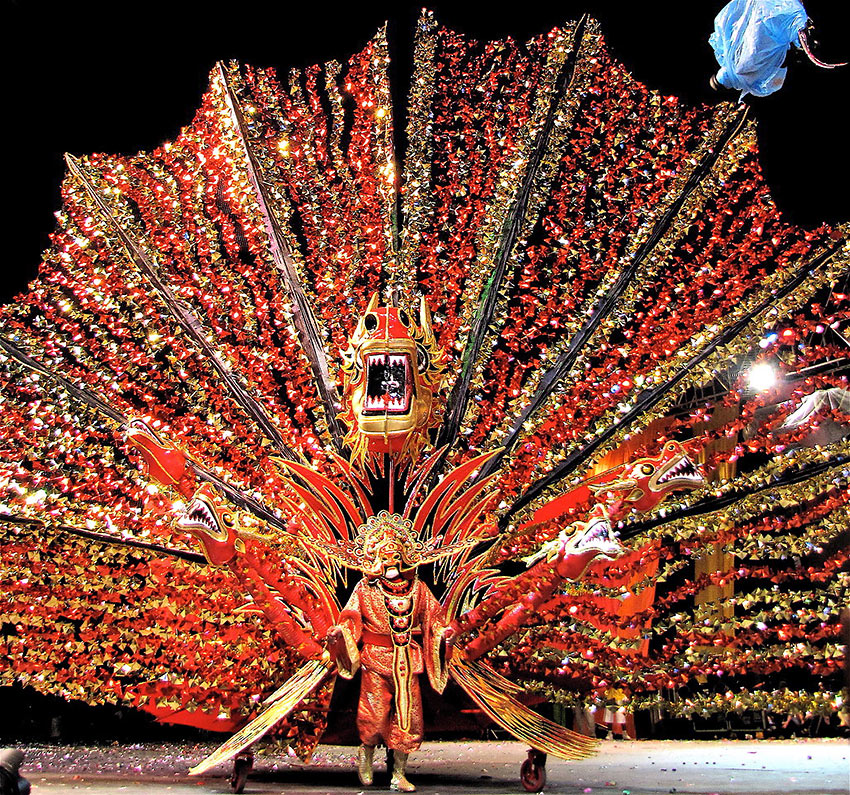
The historical layers that built Trinidad and Tobago have created one of the most splendid melting pots in the world, with a remarkable degree of affability between the diverse groups that built the nation. Understanding those historical layers is key to appreciating the country’s many grand offerings to visitors.
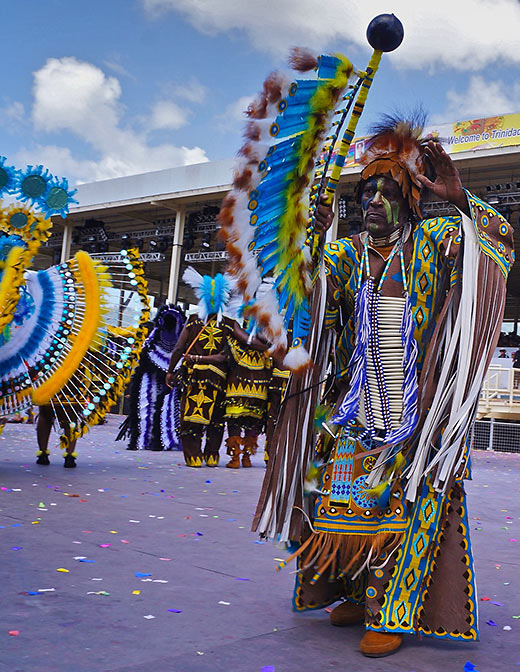 Like many other Caribbean islands, the original population was Arawak and Carib Indians, after the latter came to the islands and conquered the former. Columbus landed on Trinidad in 1498 during his third voyage, during which he again missed India but discovered South America, thinking it part of Asia. In keeping with their usual pattern, the Spanish wiped out most of the Indian population, and assimilated the survivors. Trinidad was a magnet for French, free blacks and other non-Spanish, but Spain ruled it until the British captured it in 1797.
Like many other Caribbean islands, the original population was Arawak and Carib Indians, after the latter came to the islands and conquered the former. Columbus landed on Trinidad in 1498 during his third voyage, during which he again missed India but discovered South America, thinking it part of Asia. In keeping with their usual pattern, the Spanish wiped out most of the Indian population, and assimilated the survivors. Trinidad was a magnet for French, free blacks and other non-Spanish, but Spain ruled it until the British captured it in 1797.
Tobago was much more in play. French, Dutch and British forces perpetually contested possession. During colonial times, the island changed hands twenty-two times, setting the record for West Indies turnovers. In 1803, the British took final possession.
African slaves formed a majority of the population, but after slaves were emancipated in 1838, the melting pot became much more interesting. The Europeans needed to fill a labor shortage, so in 1845 they begin bringing in both Muslims and Hindus from India as indentured servants in order to work the large sugar and cocoa plantations.
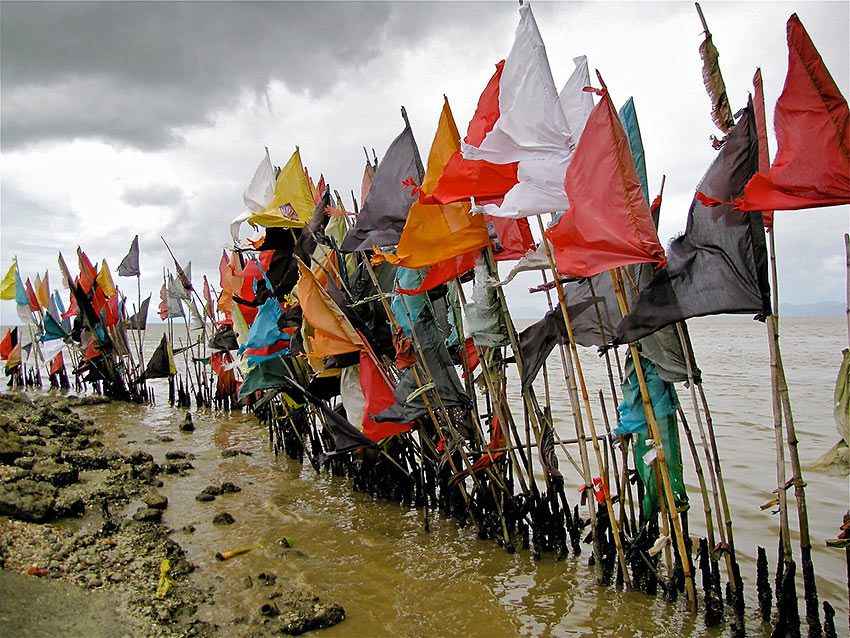
Meanwhile, Chinese started finding their way to the islands. A couple hundred came in 1806, on the ship Fortitude, part of an experiment in setting up a settlement of farmers and laborers, in anticipation of the eventual ending of slavery. It was a disaster, and the couple dozen who remained started shops or did carpentry or gardeners. A second wave came in the mid-1800’s after slavery ended, mostly from Macao, Hong Kong and Canton, as indentured laborers. A third wave came after 1911 and the Chinese revolution of that year. The pace picked up between the 1920’s and 1940’s, most of them families and friends of immigrants who’d arrived earlier. Instead of working on estates, they adapted to roles as peddlers, traders, shopkeepers and merchants.
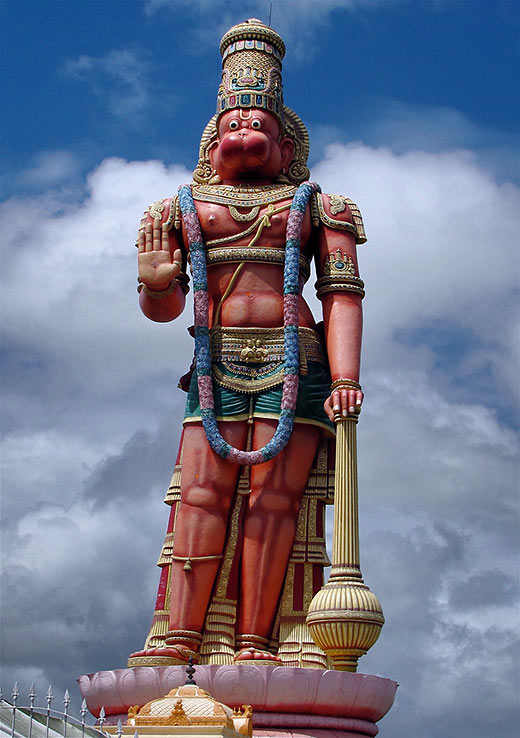 Additionally, many Chinese from elsewhere in the Caribbean came to Trinidad after they’d finished their indenture obligation on other islands. When China started opening up to the outside world in the late 1970’s, a fourth wave of migration began. In 1960, Sir Solomon Hochoy was knighted by the Queen of England and became the only nonwhite British governor of Trinidad and Tobago, becoming Governor-General when the country became independent in 1962.
Additionally, many Chinese from elsewhere in the Caribbean came to Trinidad after they’d finished their indenture obligation on other islands. When China started opening up to the outside world in the late 1970’s, a fourth wave of migration began. In 1960, Sir Solomon Hochoy was knighted by the Queen of England and became the only nonwhite British governor of Trinidad and Tobago, becoming Governor-General when the country became independent in 1962.
People from these divergent backgrounds have blended their heritages, and often their families. Although the number of unmixed Chinese Trinidadians, or Sino-Trinidadians, probably peaked in 1960 at eight and a half thousand, many more islanders have some Chinese in their ancestry. Among the much larger Indian population, it isn’t unusual for Muslims to marry Hindus, with a marriage in each religion to please the families. The families then just double down on the religious holidays. The racial and religious tensions found in much of the world’s regions are hard to find here. It’s a very refreshing experience.
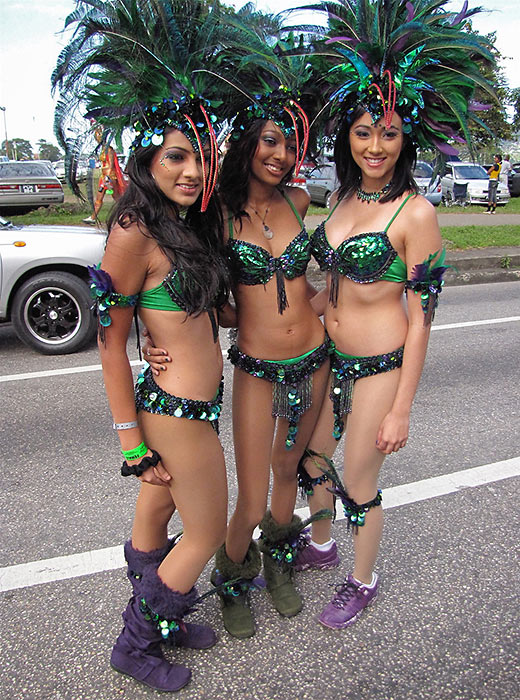 If you ask a cab driver his family’s ancestry, be prepared to hear a long story about a well-branched family tree, likely to include Europeans, Amerindians, Africans, Indians, Chinese and others such as Portuguese, many of whose ancestors were also indentured laborers, and Arabs. They all bring something to the cultural mix, not always in proportion to the size of the population. For example, Buddhists may only be a percent of the population, but the country was recently fascinated by introduction of the Shaolin Martial Arts of Ch’an Buddhism.
If you ask a cab driver his family’s ancestry, be prepared to hear a long story about a well-branched family tree, likely to include Europeans, Amerindians, Africans, Indians, Chinese and others such as Portuguese, many of whose ancestors were also indentured laborers, and Arabs. They all bring something to the cultural mix, not always in proportion to the size of the population. For example, Buddhists may only be a percent of the population, but the country was recently fascinated by introduction of the Shaolin Martial Arts of Ch’an Buddhism.
One of the pleasurable spill-overs of this melting pot is the cooking pot, and its been simmering for centuries. Consider the dish of curry chicken and roti, inherited from indentured laborers from India, along with curry versions of crab, shrimp, duck and potato. The roti is of various ingredients, including cowpeas. Sometimes its served on a skewer with eggplant relish and tomato chutney vinaigrette. A sample from Africa is callaloo, a spicy dish made from dasheen leaves, okra, crab, coconut milk and cilantro. Many dishes are stewed, barbecued or curried with coconut milk.
Spice is king. Hot peppers concoctions, including a hot sauce called “mother-in-law” that makes some people’s faces sweat just from thinking the name, often figure in. Mango chutney and curry mango are among the treats resulting form fusing the brad array of delicious fruit with spice.
Breakfasts include fried corned beef with onions and tomatoes. Fried figs with saltfish – cod in a packet – is common. Homemade coconut bread with black pudding – a blood sausage including onions, pork fat, oatmeal and spices – is a hit.
Bake and shark is popular at breakfast and at any time of day. The moment the shark shacks open up at Trinidad’s stunning Maracas Beach, long lines appear in anticipation. The local shark is deep-fried and and stuffed in pocket of deep-fried batter that is similar to the fry bread of American Indians in Arizona and New Mexico.
Maracas Beach, one of the beautiful beaches on the north side of Trinidad, is protected by a deep bay. The broad beach is dotted with tall palm trees and hardwoods, with soccer games making the sand fly about. The hour or so drive to the beach from the capital, Port of Spain, goes through mountains covered with rainforest and along cliffs overlooking the coast. One overlook area has roadside stands selling dried sour prunes, red mango and other preserved fruits with hot spice that locals can’t resist.
Rich soups and stews are known as “blue food.” The seafood offerings are superb, particularly curried crab and dumplings, and king fish. A small fresh water fish, the cascadura, is used in a rare specialty dish, with the legend that those who eat it will return to Trinidad to send their days.
The most popular drink is a rum punch made from sugar water, dark rum, lime juice and Angostura bitters.
If you really want to make your lips quiver with the local cuisine, my pick is Jemma’s Treehouse, in Speyside, Tobago.
The historical melting pot has also brought forth unique recipes for music. Among them is the steel drum. It’s a brilliant innovation that began in the 1930’s as orchestras of dustbin lids, prying pans and oil drums. The tops of 55 gallon drum tops are hammered into a pitched percussion instrument called a steelpan, with pitched notes based on the size of the ovals in the pan. One might have thirty soprano-range notes, another only three bass notes, necessitating a player to have six pans. There’s a large range of instruments between them, and pan orchestras might have a hundred or more players. High tech techniques are continually developed to better tune the pans, and some are designed at the outset to be musical instruments, including by one manufacturer in Switzerland. The music a good orchestra puts out is a marvel to hear.
The pan evolved from traditions of African drums and sticks used by slaves to communicate, which were suppressed on the islands. Percussion bamboo sticks were banned in 1883 after they were used as weapons in conflicts between groups who lost control during the Mardis Gras carnival celebrations inherited from the French. Drumming traditions were also strong in India. After the initial bans, bottles and spoons were used until the pans were created.
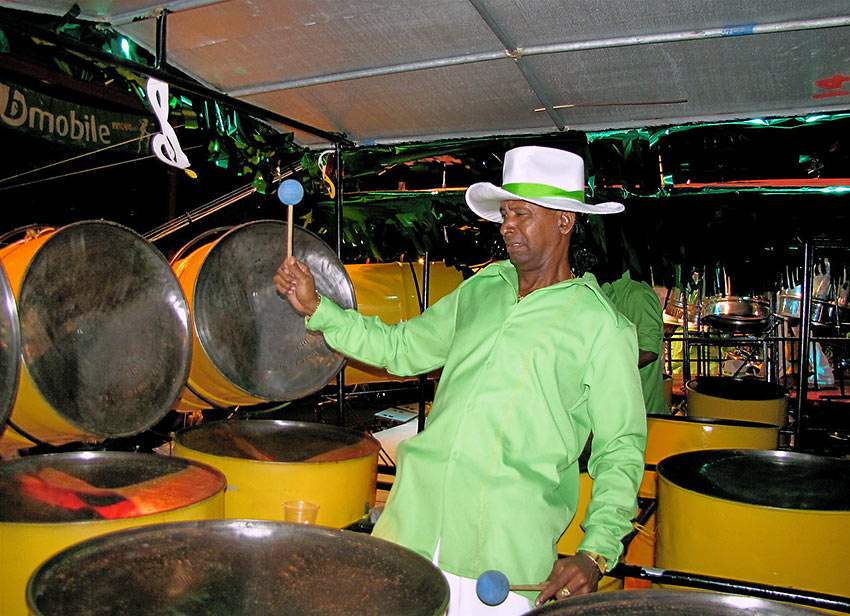
Another of Trinidad and Tobago’s musical gifts, Calypso, has its roots in attempts at communication between slaves. Strongly harmonic and rhythmic, the songs are often in the language of a French creole that was created to allow the melting pot to better communicate, as the slaves from different tribes and the other inhabitants originally came with very different languages. Songs are led by a griot, a poet and wandering musician who is both witty and very knowledgeable on local history and events. The griot style has been traced to West Africa and the old Mali Empire of seven hundred years ago. After slavery was abolished on the islands, carnival festivals began to develop in the 1830’s, with large tents for Calypso concerts and competitions.
Soca music is a more recent local creation, from 1963. It originally included instruments from India, though they were used less when the form later adopted elements of American soul and funk. Good times are at the core of the songs. Soca is also the venue for lively carnival competitions.
Other variations on these musical forms include Extempo, a type of freestyle calypso war for which the lyrics are improvised on the spot. Singers don’t just compete for the carnival title of Extempo Monarch. Some wander the streets with a guitar or walk onto a bus and make up songs on the spot about the people they see. Rapso is another musical style, with more political and spiritual themes, and Chutney, which grew from the Indian populations. These and other styles are woven into the carnival competitions but are prevalent throughout the year.
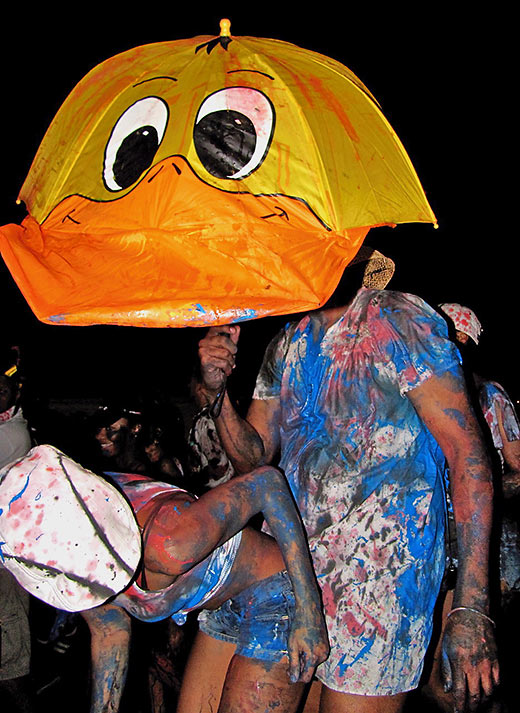 Rapso is well-suited to the carnival street party J’ouvert, which uses any materials that are handy to beat out rhythms. The celebration starts around three or four in the morning and lasts until a few hours after sunrise. The calypso and soca bands that lead their followers are now often on large sound trucks, with beverage trucks close by. Celebrants, known as Jab Jabs, throw colored powders and water, and smear paint, mud or oil on each other. The customs come from a disturbance long ago that became a riot, with people disguising themselves, and from a festival held by the Indian population, Holi. There are often fire breathers, using a high alcohol rum, who punctuate the darkness with blasts of flame.
Rapso is well-suited to the carnival street party J’ouvert, which uses any materials that are handy to beat out rhythms. The celebration starts around three or four in the morning and lasts until a few hours after sunrise. The calypso and soca bands that lead their followers are now often on large sound trucks, with beverage trucks close by. Celebrants, known as Jab Jabs, throw colored powders and water, and smear paint, mud or oil on each other. The customs come from a disturbance long ago that became a riot, with people disguising themselves, and from a festival held by the Indian population, Holi. There are often fire breathers, using a high alcohol rum, who punctuate the darkness with blasts of flame.
Throughout J’ouvert and the daylight carnival parades, there is a great deal of “wining”. Celebrants, in mud or in risqué costumes, often complete strangers, suddenly do a comical bump and grind with each other to the music, or with onlookers who get too close, for a brief moment, and then move on. At times, a dozen people might line up for some periodic wining as they dance along. It’s a lively reminder of ancient carnival traditions in Europe that centered on fertility, and on the chance for slaves and the lower class to cut loose. After Christianity gained control of carnival, the wildness and chaos led up to the sober period of Lent that leads up to Easter. But carnival, with its satirical traditions, always retains its resistance to authority, and its embrace of sex.
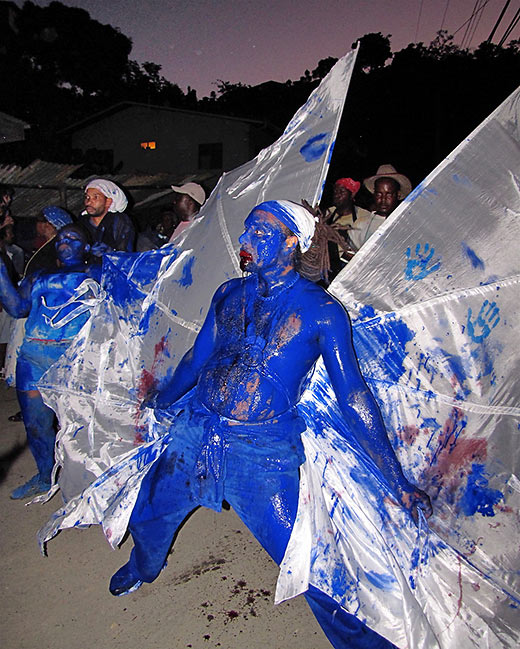 While the focal point of carnival is in Trinidad’s capital, Port of Prince, it has smaller celebrations throughout the island, including one in a village up in the hills where “blue devils” dance through the street and demand tribute from onlookers. If a dollar isn’t given – keep the rest of your money well-hidden, the devils will grab what they can – the devils will smear them with blue paint, (it doesn’t wash out of clothes, this writer attests).
While the focal point of carnival is in Trinidad’s capital, Port of Prince, it has smaller celebrations throughout the island, including one in a village up in the hills where “blue devils” dance through the street and demand tribute from onlookers. If a dollar isn’t given – keep the rest of your money well-hidden, the devils will grab what they can – the devils will smear them with blue paint, (it doesn’t wash out of clothes, this writer attests).
In the evening, as with the steel pan competition, Panorama, with its huge orchestras, and the Soca and Calypso competitions, which include singers, bands and dancers, there is also a “Mas” competition for King and Queen costumes that can only be believed if seen. It’s often accompanied by elaborate music, dancers and impressive stagecraft. One person, aided by no more than two or three small roller wheels, wears a huge costume weighing hundreds of pounds, and it is not unusual to see someone collapse after getting his or her costume across the stage. The technical expertise that goes into making these huge costumes wearable is part of the art form, and it’s impressive, though everyone prays there is no strong wind that might sail a contestant off the stage. Themes are often drawn from China, India, Africa and American Indians.

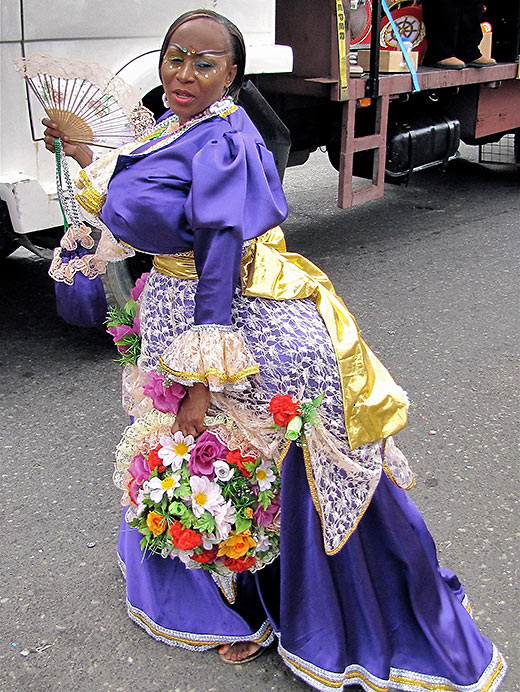 No less impressive are the costumes worn by children at their carnival. It’s also a pleasure to see how inclusive it is, with a good number of children with disabilities, mental or physical, putting on elaborate costumes and joining the parade with everyone else. A large number of kids are up on stilts, often very high stilts, in tribute to the Moko Jumbies. Legends had them walking across the Atlantic Ocean from Africa, to eventually walk the streets of Trinidad in freedom. They also acquired a ghost persona from the Indian population, and powers to protect people by driving off evil spirits. Adults also have Moko Jumbie bands, and the very tall, costumed figures are remarkable dancers.
No less impressive are the costumes worn by children at their carnival. It’s also a pleasure to see how inclusive it is, with a good number of children with disabilities, mental or physical, putting on elaborate costumes and joining the parade with everyone else. A large number of kids are up on stilts, often very high stilts, in tribute to the Moko Jumbies. Legends had them walking across the Atlantic Ocean from Africa, to eventually walk the streets of Trinidad in freedom. They also acquired a ghost persona from the Indian population, and powers to protect people by driving off evil spirits. Adults also have Moko Jumbie bands, and the very tall, costumed figures are remarkable dancers.
While many of the costumes are known for their brevity, one of the most fun is a satirical costume tradition that pokes fun at the wives of the French plantation owners of long ago, who liked to dress up as aristocracy. The carnival version adds wildly exaggerated rumps and busts, and sports parasols. There are many other traditional costume characters, including Navy sailors, Fancy Indians from North America, dragons, Minstrels with faces painted white, and Bats with big wing spans.
While Tobago, better known for a huge jazz festival in April, also celebrates carnival, it’s much less grandiose. For many Trinidadians, it is a post-carnival retreat where people can calm down. They hop a plane or ferry to get to the country’s alter ego island. While Trinidad’s modern economy leaned heavily on oil and now is focused on being a major producer of natural gas, Tobago’s riches are mostly in its unspoiled natural environment.
Among its natural offerings is the Main Ridge Reserve, created to ensure that sugar planters wouldn’t fell all the trees for timber. There was a remarkable realization by a mid-18th century scientist, Stephen Hales, that taking down the trees would eventually end the moisture cycles that brought rain, turning islands like Tobago into a desert and ending all agriculture there. It was a tough sell in the British Parliament, where many members also owned plantations in Tobago. But after eleven years of effort, one member, Soame Jenyns, convinced his colleagues that Hales was correct. Protected by law in 1776 not to preserve royal hunting and pleasures, but to protect the watershed, this is the world’s oldest legally protected forest reserve of its kind.
The act creating the reserve is a marvel of environmental foresight that much of the world could still greatly benefit from emulating: “Did also in pursuance of your said Instructions remove to Your Majesty a tract of Wood Land lying in the interior and most hilly parts of this island for the purpose of attracting frequent Showers of Rain upon which the Fertility of Lands in these Climates doth entirely depend. William Young assented to by his Honour the Commander in Chief this Thirteenth day of April One Thousand Seven Hundred and Seventy Six.”
The reserve now covers over two-thirds of the island. Most of the forest is very similar to the type of forest that dominates in the Amazon. Unlike Trinidad, there are no poisonous snakes in the forests of Tobago, making them a worry-free pleasure to hike. Waterfalls abound, including Argyle Waterfall, which has 54 meters of stepped cascades and cold, deep pools one can swim in. Along the walk to the falls from a visitors center, one can see caymans in a river, and some of the 469 species of birds on the two islands, including many humming birds.
Beyond the local birds, from August to October the islands are visited by many migratory species form North America. There are also interlopers from South America, such as the nation’s national bird, the Scarlet Ibis. It breeds in Venezuela, which is so close it can be seen from Trinidad, but spends most of its time feeding in mangrove swamps on the islands.
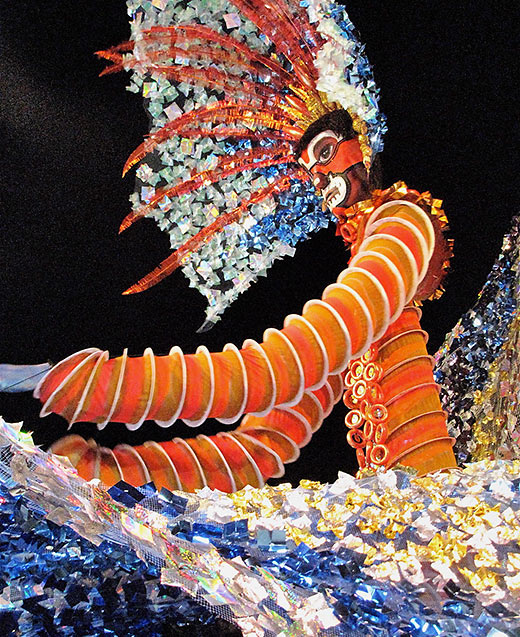 Many visitors to Tobago spend their time at the western tip, Crown Point, with its restaurants and bars, and the beautiful beaches of the peninsula Pigeon Point. But this writer found a great retreat at the far eastern tip. One can meander on the drive there, visiting sites like old colonialist forts and the ruins of sugar mills being reclaimed by jungle. Be very cautious on the winding roads, it’s easy to be absorbed by the views of many stunning bays, cliffs and beaches, when you really need to have your eyes on the road. Better to stop at safe places to take in the sites, or to take a cab.
Many visitors to Tobago spend their time at the western tip, Crown Point, with its restaurants and bars, and the beautiful beaches of the peninsula Pigeon Point. But this writer found a great retreat at the far eastern tip. One can meander on the drive there, visiting sites like old colonialist forts and the ruins of sugar mills being reclaimed by jungle. Be very cautious on the winding roads, it’s easy to be absorbed by the views of many stunning bays, cliffs and beaches, when you really need to have your eyes on the road. Better to stop at safe places to take in the sites, or to take a cab.
The North End of Tobago is the island’s most mountainous, and the beautiful bays on the Caribbean side are great for swimming, with extensive protective reefs for snorkeling. One might recognize locations like Pirates Bay that were used in the 1952 film, “Swiss Family Robinson”. You might have to hike a ways from small villages on the Caribbean side, but it’s not unusual to find coves and beaches that you can have entirely to yourself.
Just off the southeast side of the far end of Tobago is a small island, Little Tobago, across from Starwood Bay and the resort, the Blue Water Inn. There is good snorkeling and diving, with the world’s largest known brain coral and many leatherback turtles, but the Atlantic currents are powerful and one needs a good guide and experienced boatman who can keep you from harm’s way. The area attracts many sport fishermen.
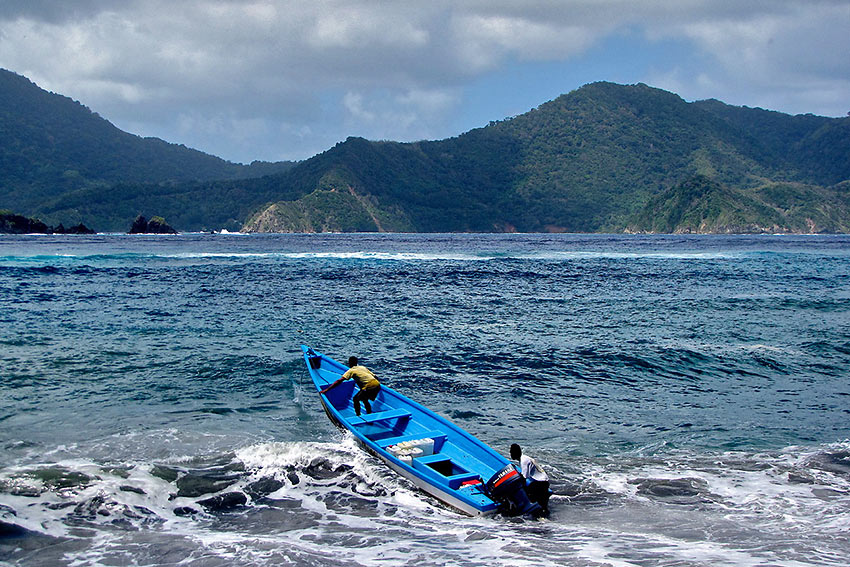
Little Tobago is a bird sanctuary with boobies, terns and the red-billed tropic bird, and offers some challenging hiking up steep slopes covered in parts by cactus and dry forest, but with much denser forest toward the top, and huge ferns. Whether or not you make it all the way to Little Tobago, Tobago is well worth exploring if you seek an experience that truly gets you away from crowds for the chance to experience environments that have mostly disappeared from the Caribbean.
Trinidad and Tobago offer a tale of two islands. Between them the diversity of people and offerings is one of the most satisfying in the Caribbean.
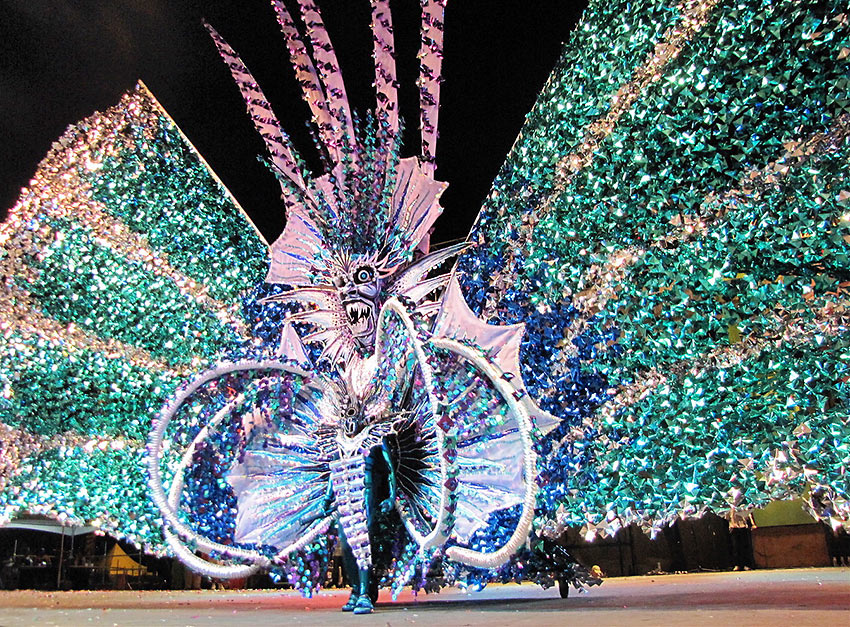
The Hyatt Regency in Port of Spain is an excellent carnival headquarters that also organizes carnival involvement. It’s also frequented by business travelers and diplomats.
There are various do’s and don’t and etiquettes, do some research on line. Avoid taking a nice camera to the paint-splattered J’ouvert, if you want images take a waterproof camera, and make sure your clothes are expendable.
Crime in Port of Spain is not unheard of, be aware and don’t press your luck. Ask folks who know the territory.
Carnival in 2019 comes later than usual, March 4 & 5, but check schedules for various music and mask competitions that might precede.
My best to Superblue. And to Caesar’s Army, you know who you are.
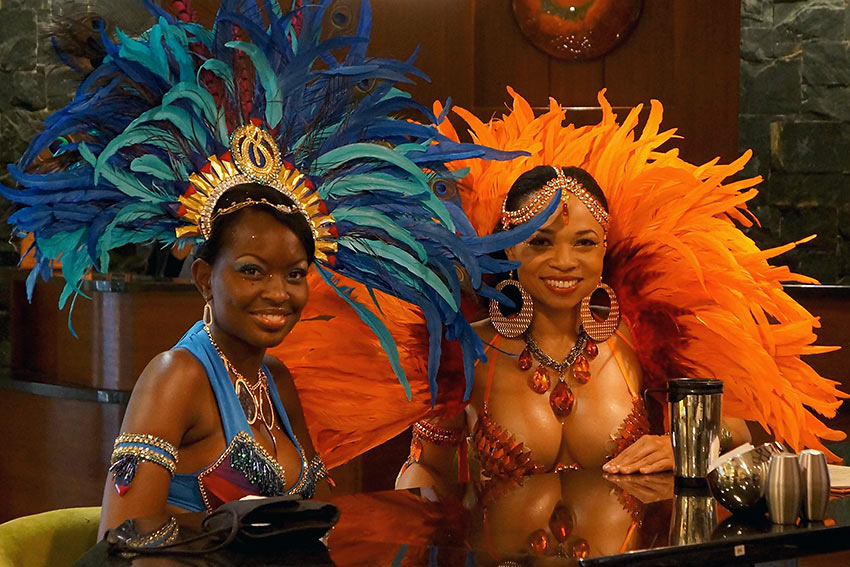
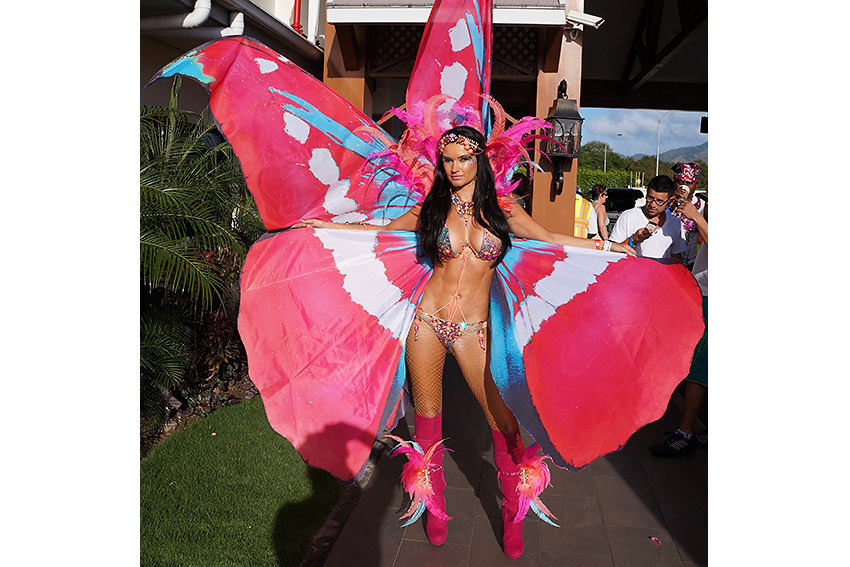
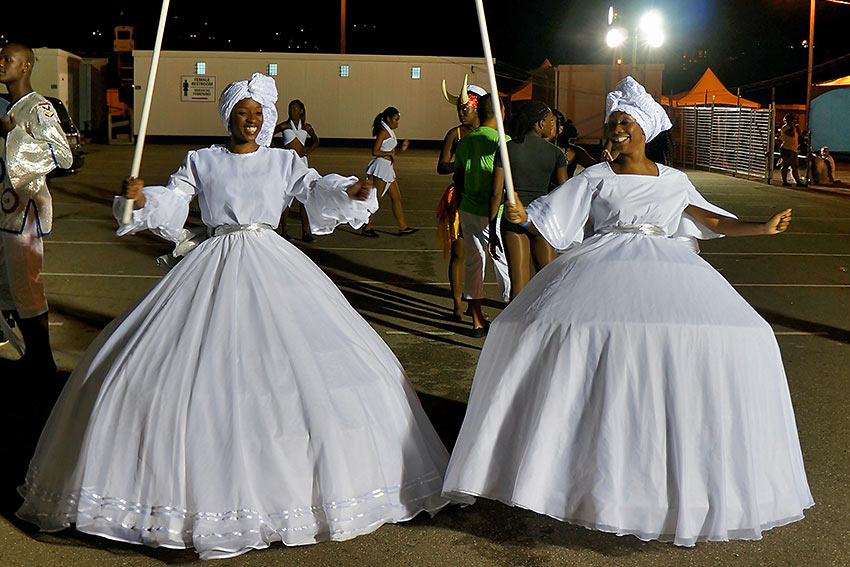
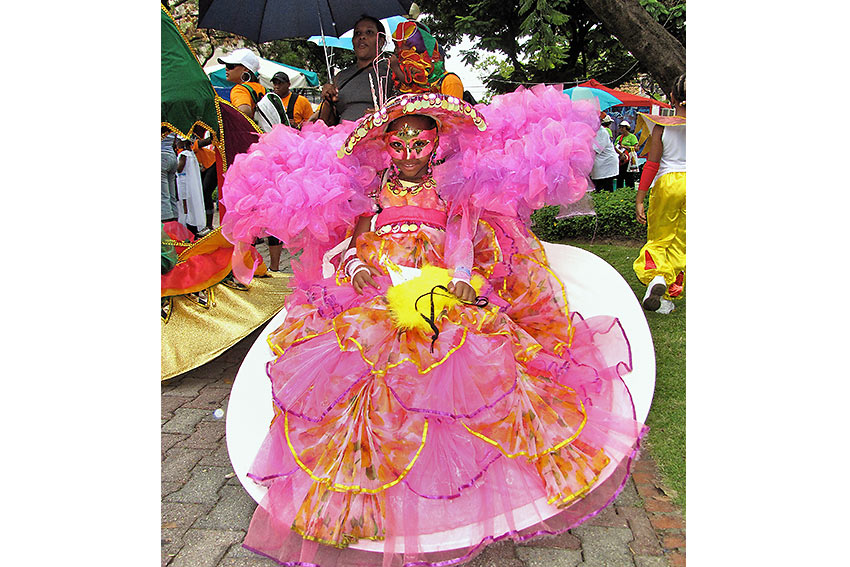
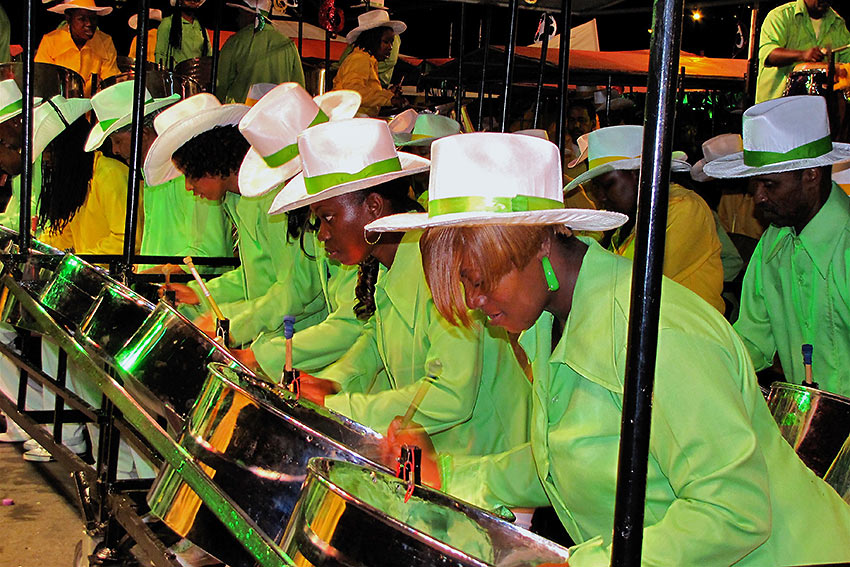
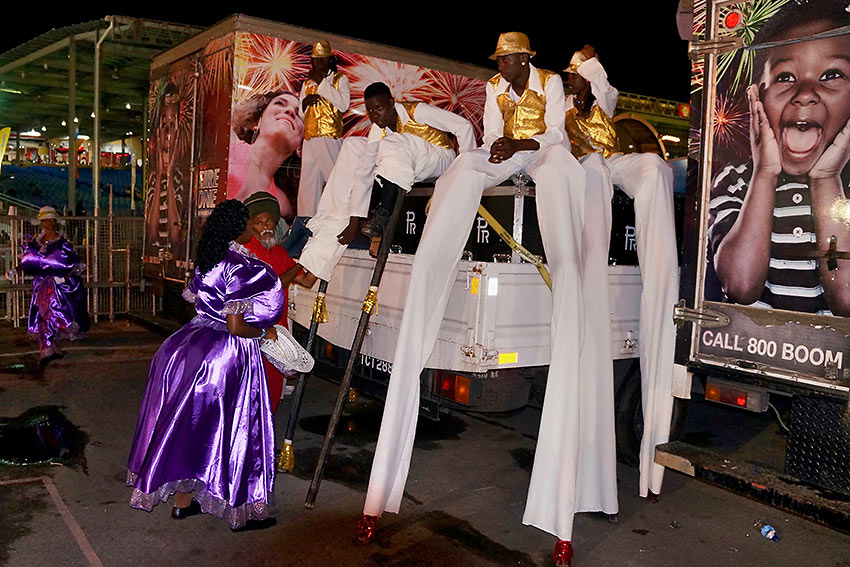
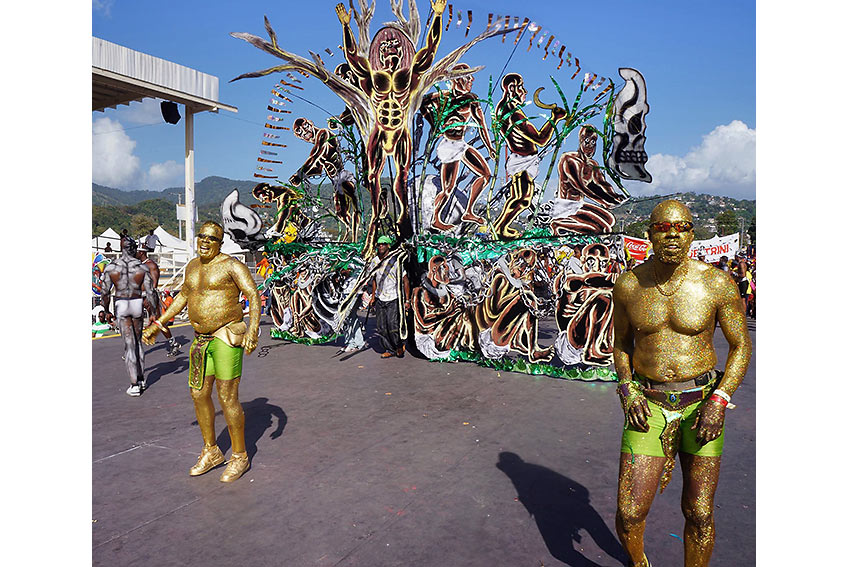
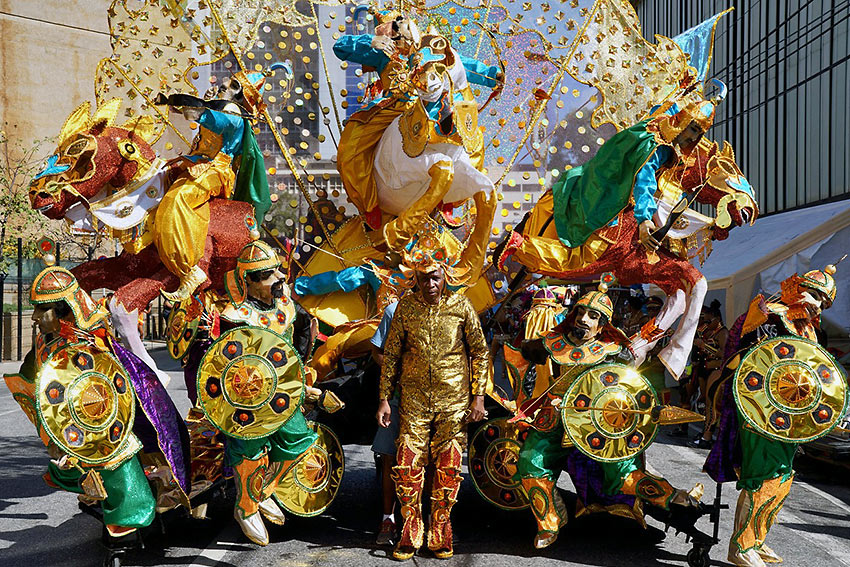
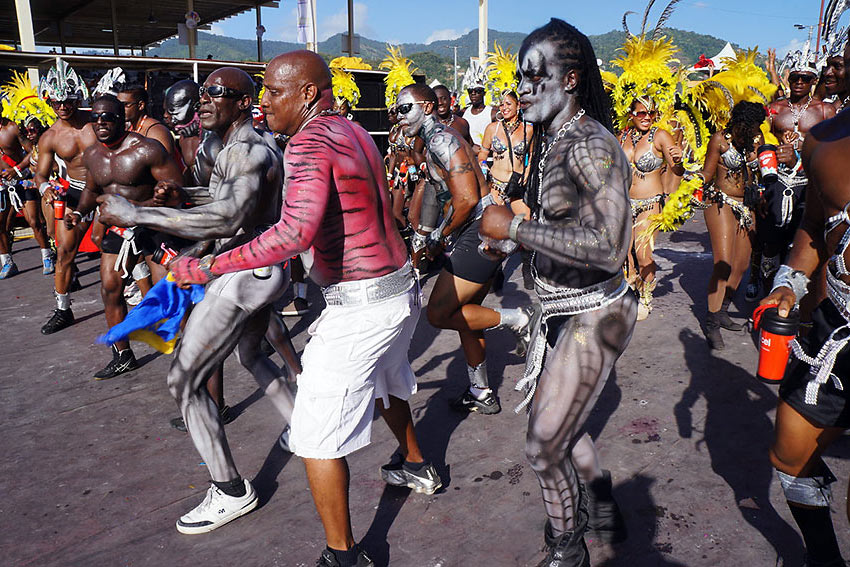
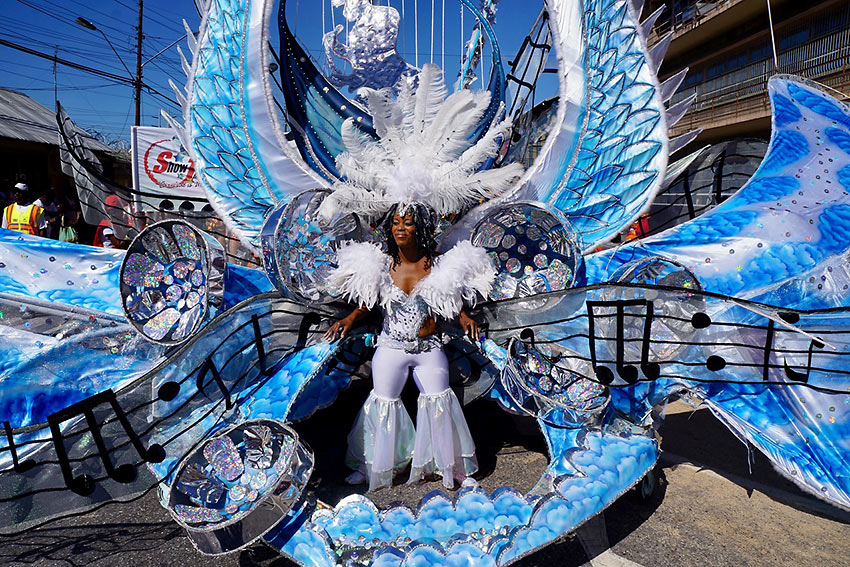
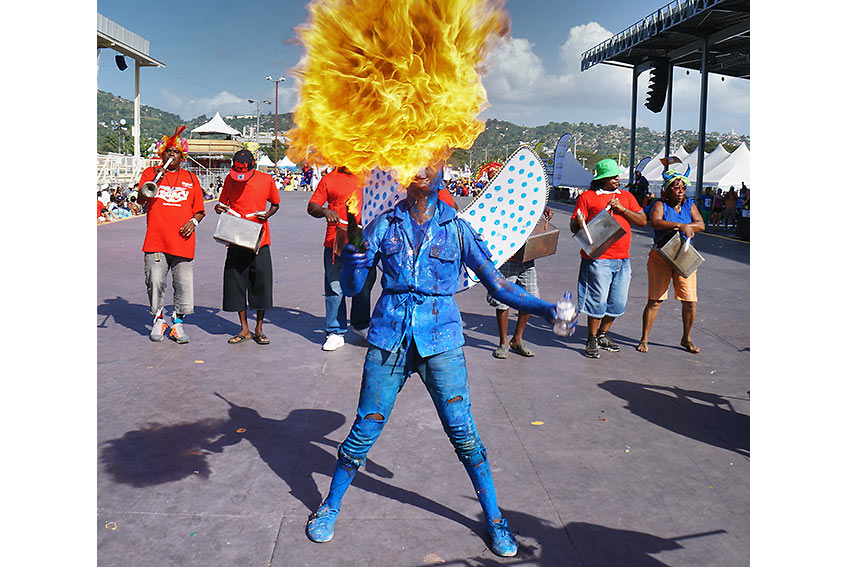
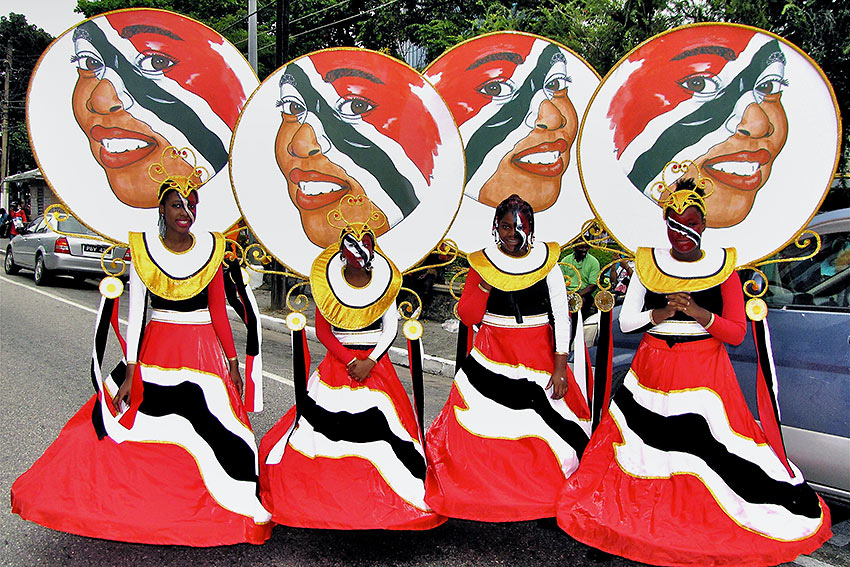
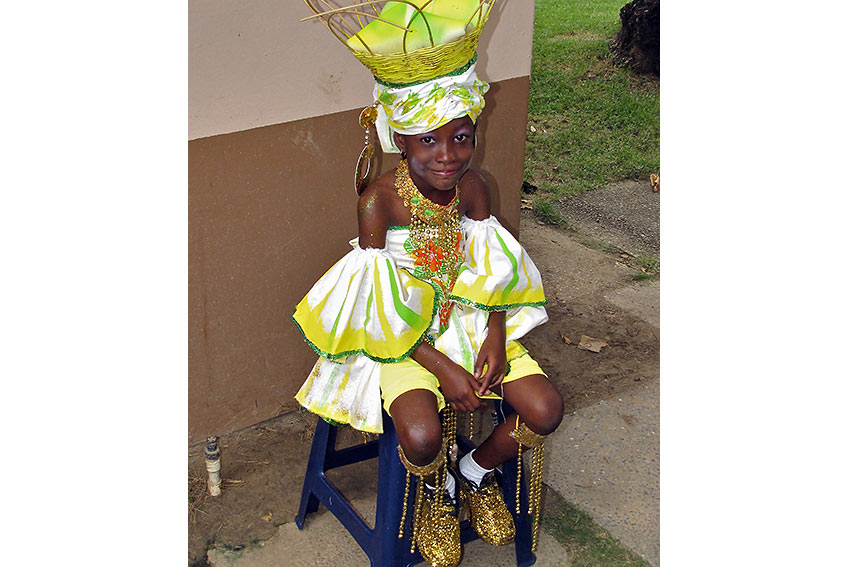
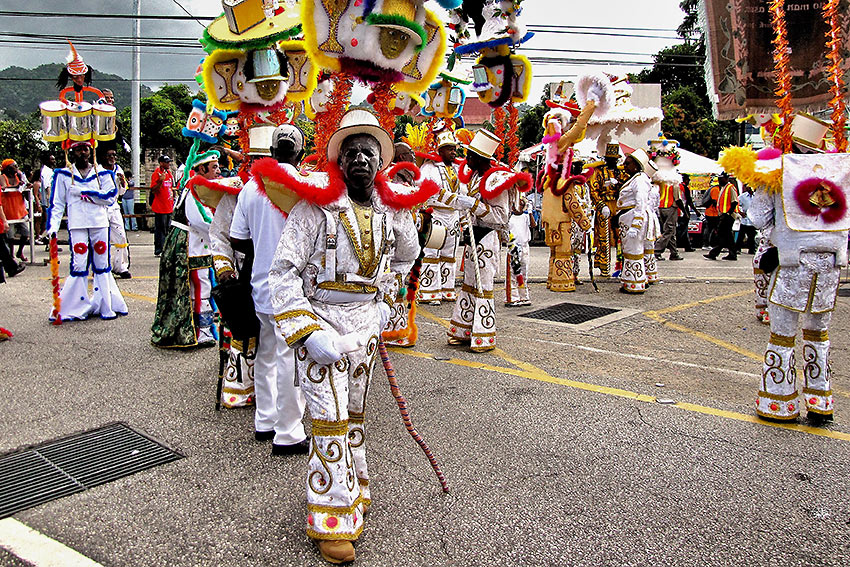
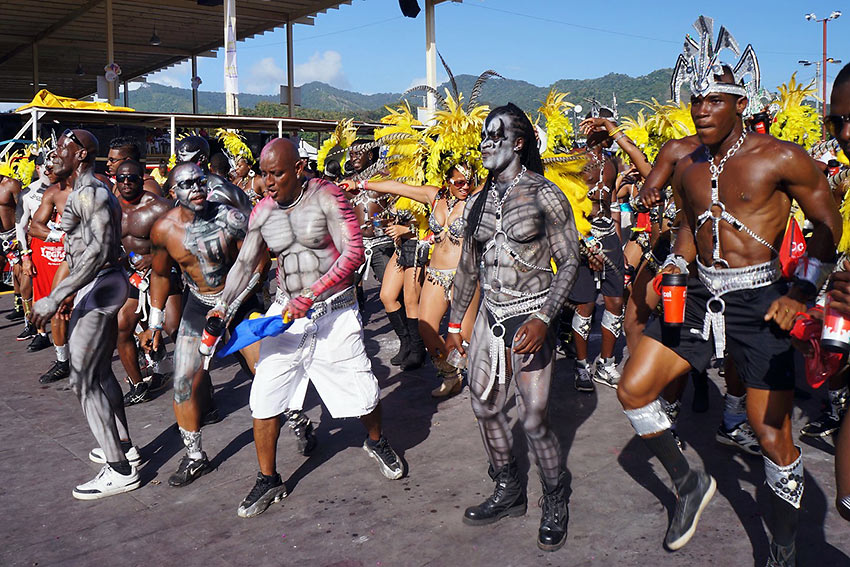
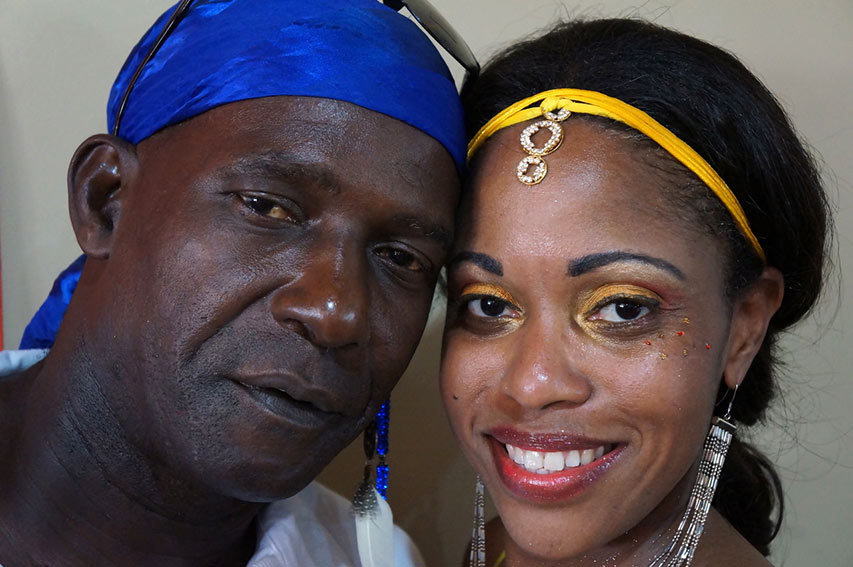
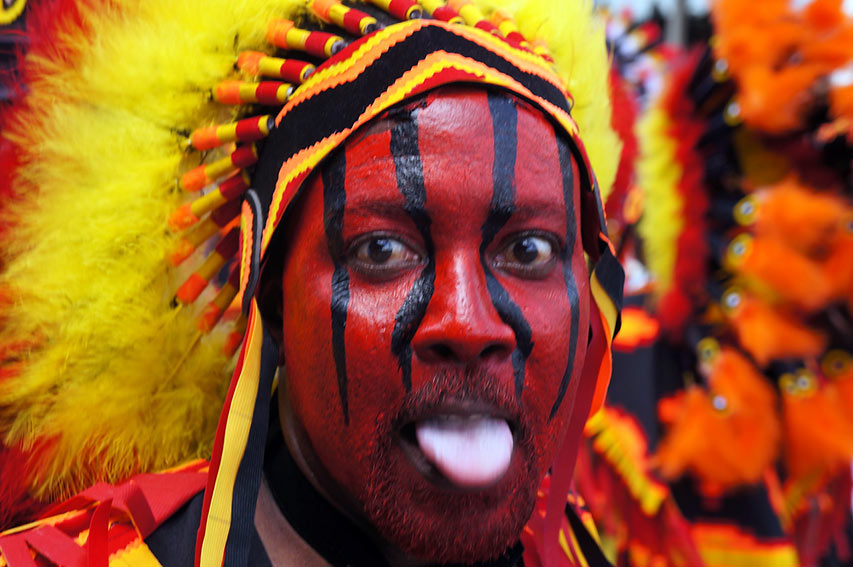


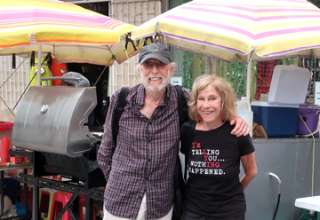
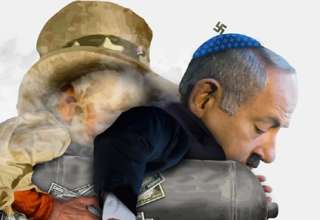
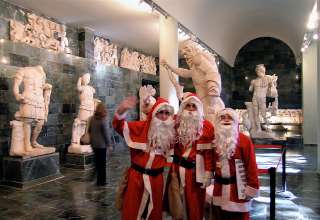



 Growing up in Kansas, Skip Kaltenheuser was tuned to travel by a traveling salesman father’s pedal to the metal vacations. He extended his reach with travel writing, and efforts such as supervising elections and doing special projects. When they’re willing to slum with him, Skip’s favorite travels are still with one or both kids, now young adults, neither indicted despite living in Washington, DC their entire lives.
Growing up in Kansas, Skip Kaltenheuser was tuned to travel by a traveling salesman father’s pedal to the metal vacations. He extended his reach with travel writing, and efforts such as supervising elections and doing special projects. When they’re willing to slum with him, Skip’s favorite travels are still with one or both kids, now young adults, neither indicted despite living in Washington, DC their entire lives.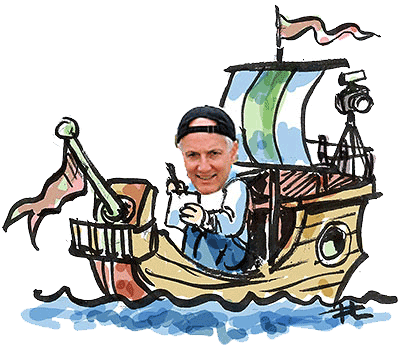














Rachel Frampton
February 12, 2020 at 9:42 am
I’ve been wanting to go to a Trinidad and Tobago carnival. It’s great to know that this type of carnival also conducts Calypso concerts and competitions. I wonder where I can find a concierge service that offers different types of packages for the event.
https://www.play.fm/
May 13, 2020 at 8:19 am
Appreciating the dedication you put into your website and in depth information you present.
It’s nice to come across a blog every once in a while that isn’t the same unwanted rehashed information. Fantastic
read! I’ve saved your site and I’m including your RSS feeds to my Google
account.